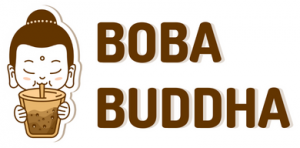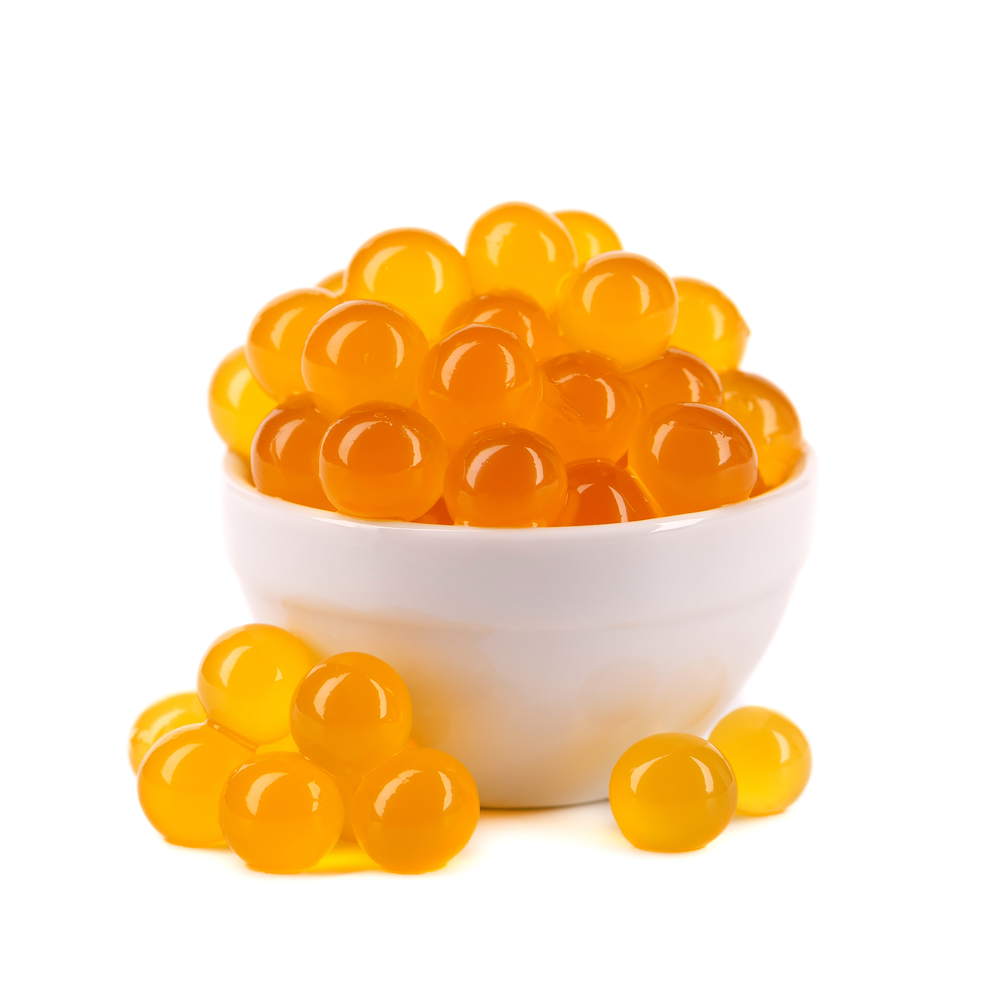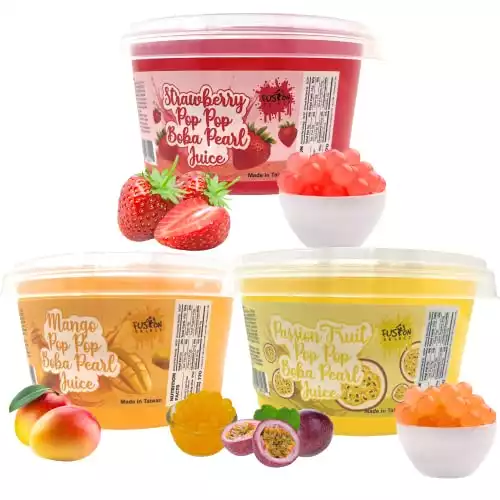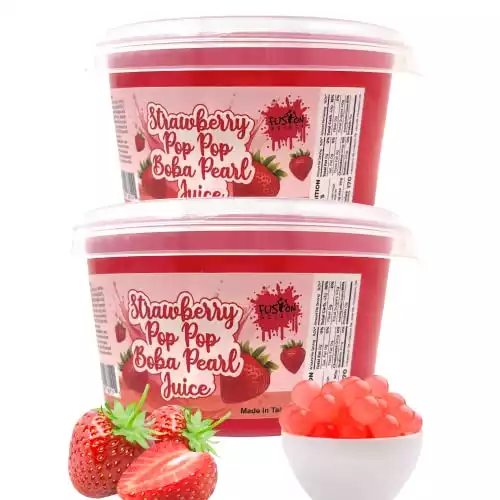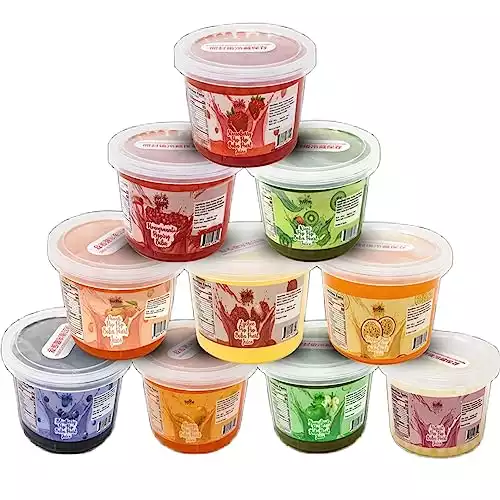Popping boba is a breakable sac containing various flavored juices and sodium alginate. Using a process called spherification, this infused mixture is placed into a calcium salt solution which creates a thin, gelatinous sphere. Upon biting into it, the popping boba bursts and delivers a mouthful of flavor.
Is Popping Boba Chewy?
Popping boba, as the name suggests, isn’t chewy at all! Popping boba is characterized by its soft and puncturable outer shell. The sac breaks and pops when you bite it, releasing all the sweet juice and leaving behind a thin, dissolvable gelatinous layer.
Instead of chewiness, the mouthfeel of popping boba is soft and quite delicate—like a juice ball.
Boba vs. Popping Boba
There are a few similarities between these two toppings. These include:
- Their bite-sized, spherical shape
- Their role as a bubble tea topping
- The “boba” in their name
But aside from these characteristics, there’s little else these two toppings have in common. Let’s look at some differences.

Cooking
Boba is made primarily from tapioca starch, a starchy and chewy substance extracted from the cassava root.
Popping boba is chemically enhanced through a process called spherification. Fruit juice and powdered sodium alginate get mixed in a calcium chloride mixture, and the resulting mixture is dipped in a cold water solution and forms a gel-like sac.
Texture
The main difference between boba and popping boba is the texture—boba is chewy, while popping boba bursts with juice when bitten.
Flavor
Boba pearls are flavorless on their own and typically absorb the taste of the bubble tea flavor.
Popping boba comes with a wide range of flavors because the juices used for spherification are endless—from mango to strawberry to orange.
With such a wide variety of flavors, popping boba has become a popular topping not just for bubble tea but also for frozen yogurt, shaved ice, and even ice cream.
Is Popping Boba Healthy?
It’s perfectly acceptable to enjoy popping boba in moderation because popping boba is made from real fruit juice. It doesn’t contain added preservatives and artificial flavoring harmful to human consumption.
But just like tapioca pearls and sugary drinks, consuming an excessive amount of this topping can expose your body to an unhealthy amount of sugar. If you’re watching your weight or are at risk for developing diabetes, it’s best to avoid this treat as there’s little nutritional value in this topping.

Common Popping Boba Flavors
The variety of milk tea popping boba flavors is as colorful as the rainbow. The sweet and refreshing kick after each pop is undoubtedly the one thing that ties them all together.
Here are the most common popping boba flavors you can find in boba tea shops:
- Strawberry popping boba
- Green tea popping boba
- Pomegranate popping boba
- Kiwi popping boba
- Lychee popping boba
- Passion fruit popping boba
- Blueberry popping boba
You can also buy your own popping boba flavors to add to drinks at home! Here are some of my favorites:
|
|
|
|
The good news is that even if your desired flavor isn’t on the list, making bursting boba balls at home is always an option. Think of the activity as a fun little chemistry project with a delectable treat as your sweet reward!
